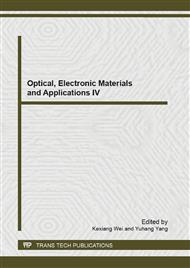p.287
p.292
p.296
p.301
p.306
p.311
p.317
p.322
p.331
Station Deployment and Signal Filter Design for Performance Evaluation of Indoor Positioning System
Abstract:
This paper investigates enhancement of fuzzy logic indoor positioning system (FLIPS) and its effect upon the wireless station deployment. The proposed scheme adopts an average filter to improve stability in transforming received signal strength (RSS) between a sensor and stations into distance. Based on the reliable distance data set, a fuzzy logic inference engine determines precise coordinates of the sensor. In order to evaluate the optimal deployment of wireless stations, this study experiments on three different size test areas within three to eight stations. Those results provide considered analysis to develope a more efficient FLIPS.
Info:
Periodical:
Pages:
306-310
Citation:
Online since:
July 2013
Authors:
Price:
Сopyright:
© 2013 Trans Tech Publications Ltd. All Rights Reserved
Share:
Citation:


